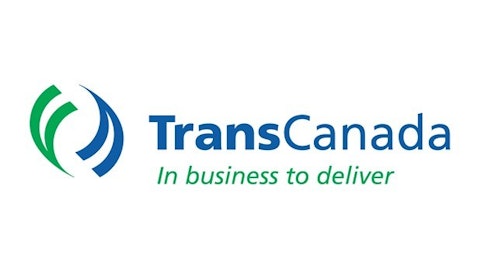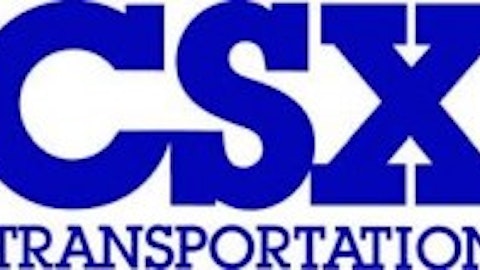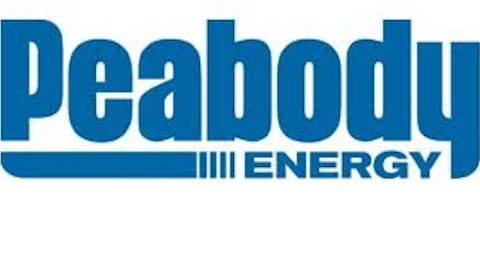Railroads are often seen as a bellwether for the broader economy because of the amount of retail and manufactured goods they transport across the nation. Norfolk Southern Corp. (NYSE:NSC) is one of the most well known railroads in the United States, operating approximately 20,000 route miles in 22 states.

The railroad industry counts Warren Buffett, one of the world’s most famous investors of all time, as a fan. Buffett is a well-known railroad enthusiast and proved it when he bought Burlington Northern Santa Fe, then the nation’s second-largest railroad, for $34 billion in 2009.
Norfolk Southern Corp. (NYSE:NSC) trades for a cheap valuation and recently increased its dividend. Should you add Norfolk Southern Corp. (NYSE:NSC) to your portfolio?
A mixed second quarter report
Norfolk Southern Corp. (NYSE:NSC) recently released its second quarter report, which showed signs of progress in certain areas, but overall left the market unimpressed.
All told, Norfolk Southern Corp. (NYSE:NSC)’s diluted earnings per share declined 9% from the year-ago quarter, due largely to a 17% drop in coal shipments.
Overall, total railway operating revenues were $2.8 billion, representing a 3% decline year over year. Volumes rose 2%, and the company’s other two segments, General Merchandise and Intermodal, saw revenue increases. Clearly, coal is the elephant in the room.
On a positive note, Norfolk Southern Corp. (NYSE:NSC) increased its dividend by 4%, to $0.52 per share. Norfolk Southern has a long history of paying dividends. In fact, the company has paid a common stock dividend every quarter for 124 years. More recently, this is Norfolk Southern’s seventh dividend increase in the last five years.
Fellow U.S. railroad Union Pacific Corporation (NYSE:UNP) is firing on all cylinders over the past several quarters.
In what proved to be a difficult year for most railroads, Union Pacific Corporation (NYSE:UNP) outperformed its U.S. rivals. 2012 was actually the most profitable year in Union Pacific Corporation (NYSE:UNP)’s 150-year history. The company reported 23% growth in diluted earnings per share, with EPS coming in at $8.27 per share.
In addition, the good times kept up in the first quarter of 2013. Union Pacific Corporation (NYSE:UNP) racked up another profit record, seeing another 13% growth in diluted EPS.
Making things even better, the company recently reported second-quarter results that saw another 13% growth in diluted earnings per share and 5% growth in operating revenues.
An interesting alternative to the two U.S.-based railroads is Canadian Pacific Railway Limited (USA) (NYSE:CP), which, as its name suggests, is headquartered in Calgary and operates mainly throughout Canada.
Canadian Pacific Railway Limited (USA) (NYSE:CP) carries a reasonable valuation, at about 16 times forward earnings. Although, judging by Canadian Pacific Railway Limited (USA) (NYSE:CP)’s fantastic performance in recent quarters, it may very well deserve a higher multiple.
Canadian Pacific Railway Limited (USA) (NYSE:CP)’s first quarter of 2013 was the best quarter in its 132-year history. The company’s earnings skyrocketed 53%, and CEO Hunter Harrison added that he expects great results for the remainder of the full year.
And, Canadian Pacific Railway Limited (USA) (NYSE:CP) just handed in record second-quarter results as well, although the stock declined since earnings missed estimates slightly. That being said, the company’s total revenues increased 10% to a record $1.5 billion.
The Foolish takeaway
Warren Buffett is famously bullish on railroads, so investors interested in the industry are clearly in very good company. I’ve written favorably about both Union Pacific Corporation (NYSE:UNP) and Norfolk Southern in the past, and my position remains largely the same today. For some time, I have been concerned about Norfolk Southern’s lagging growth, and unfortunately the company did not calm my fears in their most recent report.
That being said, a dividend increase is always an encouraging sign. And, given Norfolk Southern’s track record of paying dividends and providing shareholders with regular increases in its distribution, it’s clear that this is a company committed to returning significant amounts of cash to shareholders.
Norfolk Southern isn’t growing much right now, but the good news is it’s cheap enough to make it compelling nonetheless. It trades for 13 times trailing earnings per share. That represents a lower multiple than both the broader market as well as many other railroads. In addition, its dividend yield stands at 2.75%, ahead of most competitors’ yields.
Union Pacific Corporation (NYSE:UNP) and Canadian Pacific Railway Limited (USA) (NYSE:CP) are clearly two of the best growth stories in railroads, but investors are paying a hefty price at current levels. In particular, Union Pacific is excelling in a difficult environment, and is actually cheaper than Canadian Pacific.
Because of this, it’s more than reasonable to think Union Pacific deserves to trade significantly higher than the market, and I’m inclined to agree. Union Pacific is a best-in-breed railroad, and investors shouldn’t be scared off just because it isn’t a screaming bargain. There’s plenty of room for its multiple to expand.
All told, all three stocks should be bought, for different reasons. Union Pacific is the growth leader, Canadian Pacific is a strong international alternative, and Norfolk Southern is the turnaround play, with a low valuation and high dividend.
Robert Ciura has no position in any stocks mentioned. The Motley Fool has no position in any of the stocks mentioned. Robert is a member of The Motley Fool Blog Network — entries represent the personal opinion of the blogger and are not formally edited.
The article Does a Dividend Increase Make This Railroad a Buy? originally appeared on Fool.com is written by Robert Ciura.
Copyright © 1995 – 2013 The Motley Fool, LLC. All rights reserved. The Motley Fool has a disclosure policy.




